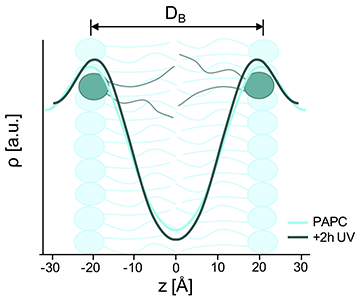Sponsored by Xenocs SASReviewed by Louis CastelOct 17 2022
The ways in which cells function are strongly dependent on cell membranes which enclose cellular compartments and separate the interiors of cells from the extracellular domain. Oxidative stress harms cell membranes and is the cause of many pathological diseases, including inflammation and infection.
A detailed understanding of the underlying mechanisms is necessary to treat such conditions successfully. However, studying biological membranes is challenging since they are highly complex systems with diverse components.
Vesicles or liposomes can be used as simple model systems for biological membranes to explore how lipid bilayers are affected by environmental factors.1
Measurements and Results
Small Angle X-Ray scattering (SAXS) was used on the BioXolver L by Parra-Ortiz et al.2 to examine how the structure of membranes with various degrees of polyunsaturation was affected by the oxidation caused by short-wave UV irradiation.
To change the degree of the bilayer’s unsaturation, the researchers employed suspensions of simple multilamellar vesicles with various ratios of the phospholipids POPC (monounsaturated) and PAPC (polyunsaturated).
The bilayer thickness and the area per lipid molecule were calculated from the Bragg peaks induced by X-Ray scattering from the multilayer stacking of the lipids. This analysis involved using a simple Fourier synthesis to reconstruct the approximate electron density profiles (Figure 1).

Figure 1. Electron density profile of PAPC multilamellar vesicles without and with 2 hours of oxidation, calculated from the SAXS data shown in Figure 1C. The regions with high electron density are attributed to the lipid headgroups, whereas the low electron density regions correspond to the acyl chains. Image Credit: Xenocs
Click here to gain access to the complete application note
References
- Lagny, T. & Bassereau, P. Bioinspired Membrane-Based Systems for a Physical Approach of Cell Organization and Dynamics: Usefulness and Limitations. Interface Focus 2015, 5, 20150038
- Parra-Ortiz, E. et al. Effects of Oxidation on the Physicochemical Properties of Polyunsaturated Lipid Membranes. J. Colloid Interf. Sci. 2019, 538, 404-419

This information has been sourced, reviewed and adapted from materials provided by Xenocs.
For more information on this source, please visit Xenocs.